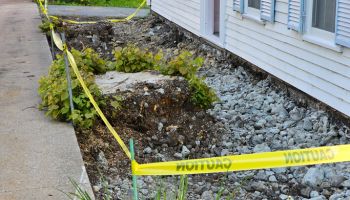MYTH: Columbus set out to prove the earth was round.
FACT: At the end of the 15th Century, most everyone knew the earth was a sphere. What was in question, however, was the circumference of the earth. Columbus underestimated the size of the earth by one-fourth.
MYTH: Queen Isabella sold the crown jewels to pay for Columbus‘ voyage.
FACT: The queen may have suggested this at some point, but her financial advisers assured her that there were other ways to finance the enterprise. One way was to make the city of Palos pay back a debt to the crown by providing two of the ships. Another way was to get Italian financial backing for part of the expenses. The crown had to put up very little money from the treasury.
MYTH: There is no doubt that Columbus was of Italian descent.
FACT: Much controversy surrounds the origins of Columbus. Some say he was a “converso,” or a converted Jew. Others say he was born on Corsica, and there is even a theory that traces him to Viking ancestors. The prevailing theory whoever, is that he was a Genoese, born and raised in that seaport city in what is now Italy.
MYTH: Columbus died a pauper, in chains, in a Spanish prison.
FACT: Despite the fact that the Spanish crown retracted some of the privileges promised to Columbus, he was a relatively rich man at the time of his death. Although he returned to Spain in chains in 1500 after his third voyage, the King and Queen apologized for the misunderstanding and had them removed. Columbus died quietly at the age of 55 in Valladolid, Spain, on May 20, 1506 in his own apartment attended by family and friends.
MYTH: Columbus set foot on North American soil at some point, which is now a part of mainland United States.
FACT: Columbus never saw mainland North America. His first landfall was in the Bahamas, probably the current San Salvador (Watlings Island), although even this is disputed (Samana Cay, an island 65 miles south of San Salvador is a strong contender). There are proponents for seven other possible island landing sites. The only current U.S. territories either sighted or visited by Columbus are the U.S. Virgin Islands, which Columbus named on his second voyage, and Puerto Rico. While in anchor of St. Croix (USVI) on November 14, 1493, some of Columbus‘ crew experienced the first hostile encounter with the Indians. Five days later he landed at San Juan Bautista, which is now Puerto Rico. Later he would visit the northeastern tip of South America and the eastern coast of Central America, but never mainland U.S.A. The fact is that Columbus never admitted that he had discovered a new continent.
###
Dave Ficere
Copyright © 2010
Metro Networks Communications Inc., A Westwood One Company
10-11-2010 01:07:58













